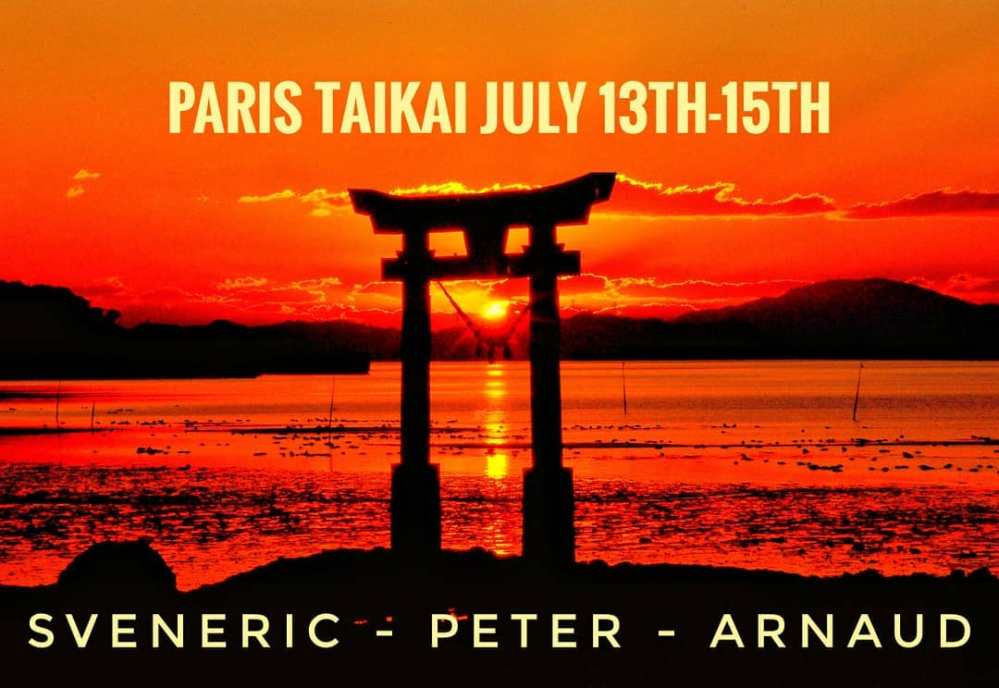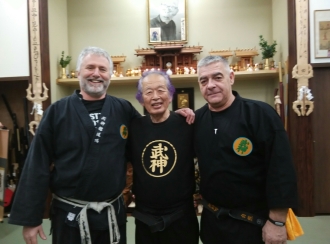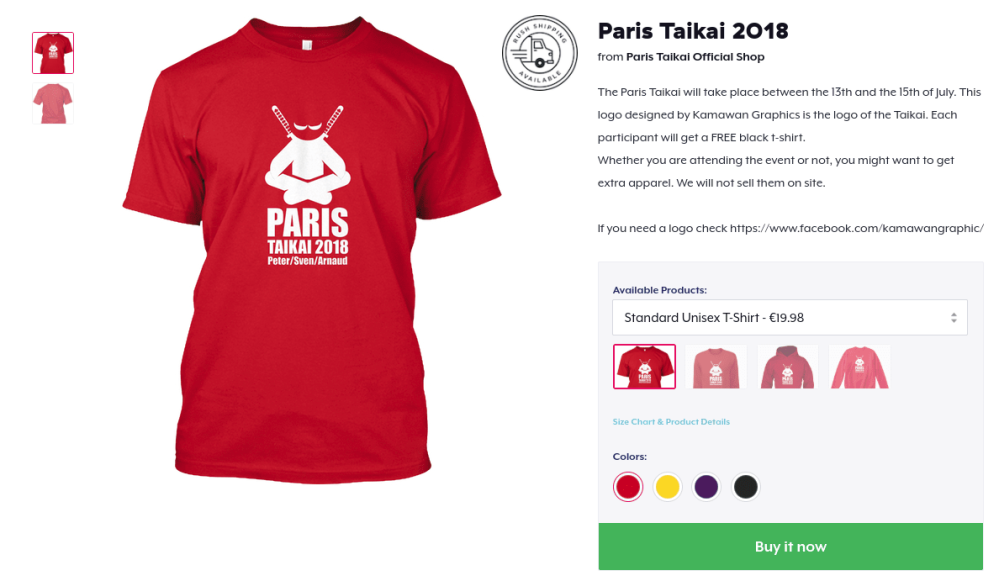One Finger Is Enough!
From Shiro Kuma by kumablog
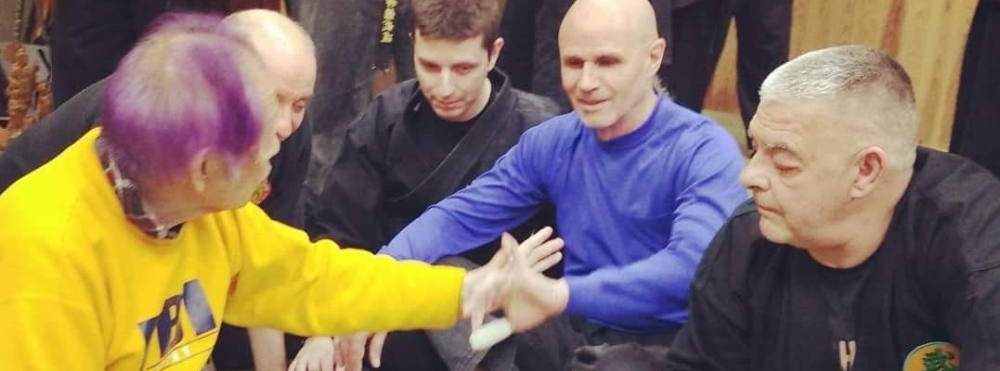
Hatsumi sensei controls distance with only one finger. When you attack him, he moves away enough to place one finger on your attacking arm. He adjusts it on the hand, wrist, or forearm, and applies no pressure. Instead, there is only soft physical contact.
Sensei said that Josei Goshin Jutsu (1), to fight like a woman the last thing he learned from his teacher. He said it is the most challenging thing that he ever trained. Controlling the opponent’s violence without force is the highest level of fighting. This is Mutō Dori.
During wartime, we can use more violence. But in the 21st century, we have to limit our reactions to what is legally accepted. During peacetime, this type of control is vital as everyone must obey the Law. Be aware that legal environments differ significantly from one country to another.
“Self-defense is a countermeasure that involves defending oneself, one’s property or the well-being of another from harm. The use of the right of self-defense as a legal justification for the use of force in times of danger is available in many jurisdictions, but the interpretation varies widely.”
France has adjusted the laws about self-defense since January 2015. The violent terrorist attacks have created a near war state in the country. So, the law has evolved. (2)
Josei goshin jutsu is more powerful because it doesn’t need any strength. It is hard for practitioners to understand they can solve a fight without being violent. This is the famous “Chikara Janai” repeated by Hatsumi sensei in class. (3)
Sōke said that we keep using speed and strength even though he asks us not to do so because of wrong timing. He said that “everybody is rushing because we are late.” Using an analogy, he added, “it is like catchball, expect the point of arrival in space and time and bring in.” Anticipation is all you need.
When studying “Kannin Dokuson,” we learned to control everything: the opponent, us, and the environment. (4)
Last Sunday Sensei said that “if you are controlling yourself, then it is all the same.” By controlling yourself, you do not react too early but at the correct moment. Your timing will match the attacker’s speed and moment, and you will be able to control him with only one finger. When you can control yourself, you do not show anything. If your intentions motivate your actions, you make mistakes.
What you do when you are at the right distance and at the right moment depends on the attacker. It is not your fight, it is not your decision. Your actions are natural it is not a technique. He said that “whatever you have, use it.”
There is no technique because, at this level of Mutō Dori, we are way beyond the technical realm. (6)
Do you want to be invincible? Fight like a woman with “Josei goshin jutsu,” and you will always get the finger distance right.
And don’t forget: “One finger is enough!” (7)
_____________________________
1. Josei Goshin Jutsu: 女性護身術; woman art of self-defense
2. Terrorist attacks of Charlie Hebdo, the Bataclan, The Stade de France, Nice, etc
3. Chikara Janai 力じゃない; there is no force
4. Kannin Dokuson 貫忍 独貴; respect Uke, yourself, and the environment.
KAN 一貫/ikkan/consistency; coherence; integration; 貫/kan;
NIN 忍/nin/endurance; forbearance; patience; self-restraint;
DOKU 独り/hitori/one person|alone; solitary;
SON 尊/son/tattobu/to value; to prize; to esteem; to respect; revered; noble
5. Read https://kumablog.org/2017/01/20/kannin-dokuson-first-approach/ and after

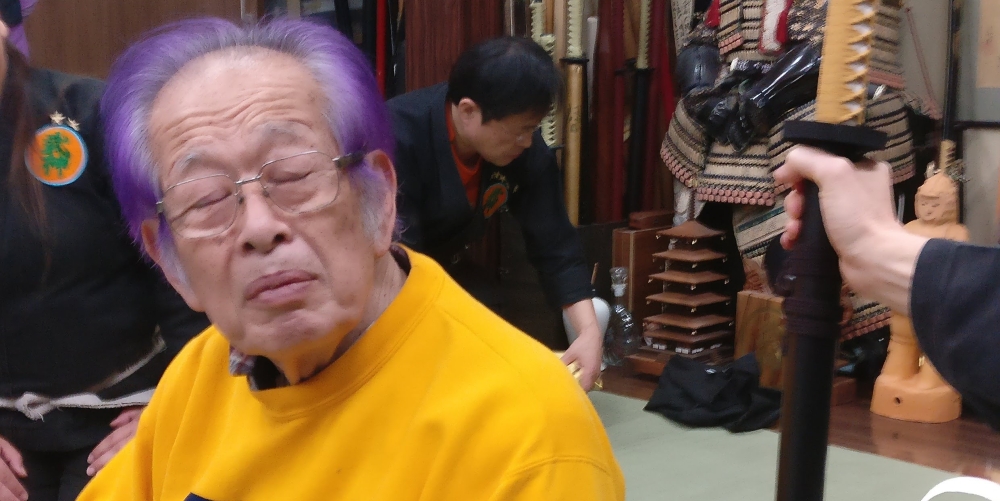 This morning, I was exchanging with my friend Leandro Barros from Brazil. We were discussing ranking in the Bujinkan.
This morning, I was exchanging with my friend Leandro Barros from Brazil. We were discussing ranking in the Bujinkan.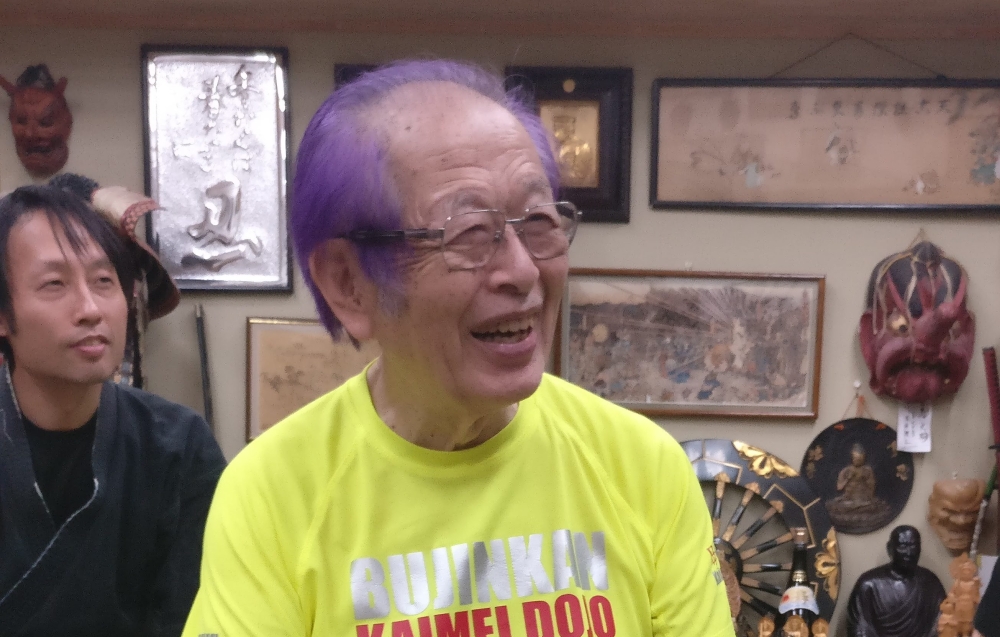 Each class with Sensei brings more depth to the understanding of “control.” We trained taijutsu, knife, hanbō, sword, bō, and yari yesterday. I can summarize it in one set of words: “Hi no Ken.” (1)
Each class with Sensei brings more depth to the understanding of “control.” We trained taijutsu, knife, hanbō, sword, bō, and yari yesterday. I can summarize it in one set of words: “Hi no Ken.” (1) During the past months, Hatsumi sensei has been insisting on not avoiding Uke’s attacks. He has been repeating it, each class since I arrived.
During the past months, Hatsumi sensei has been insisting on not avoiding Uke’s attacks. He has been repeating it, each class since I arrived.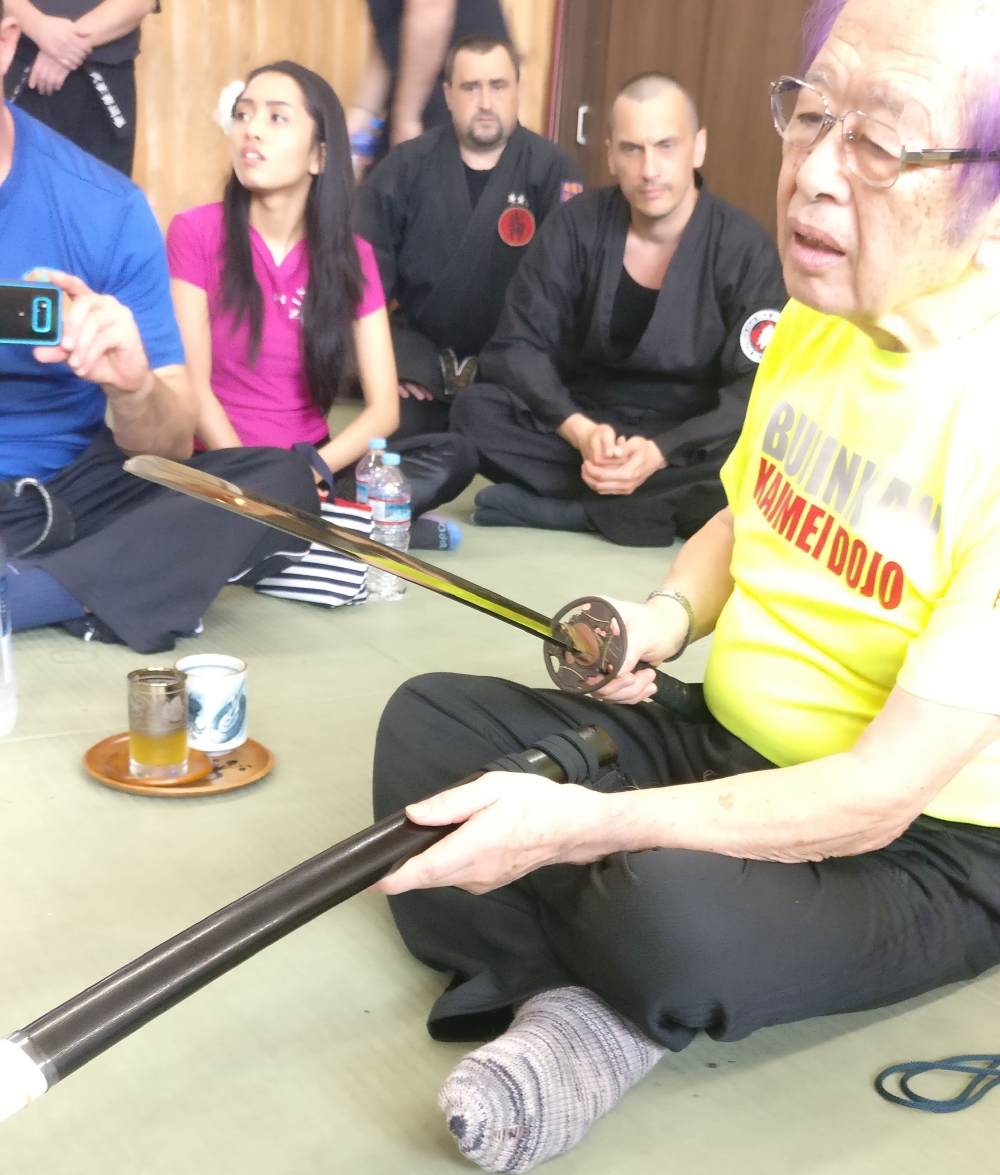
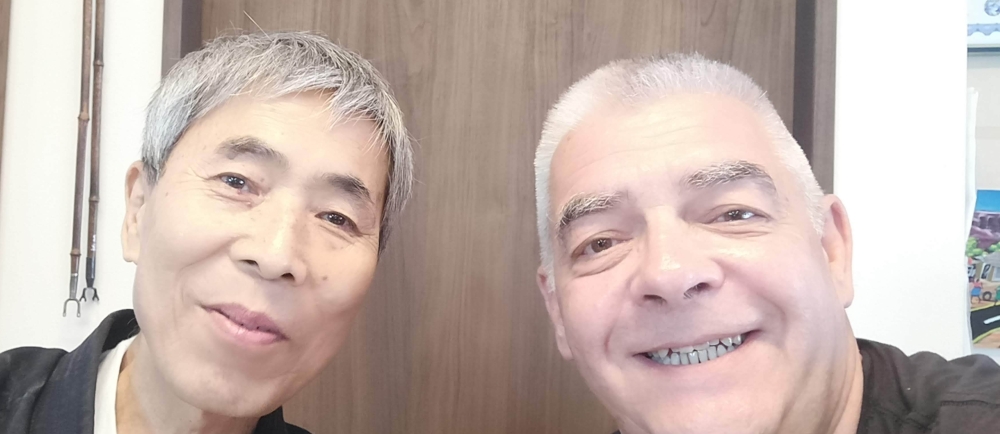
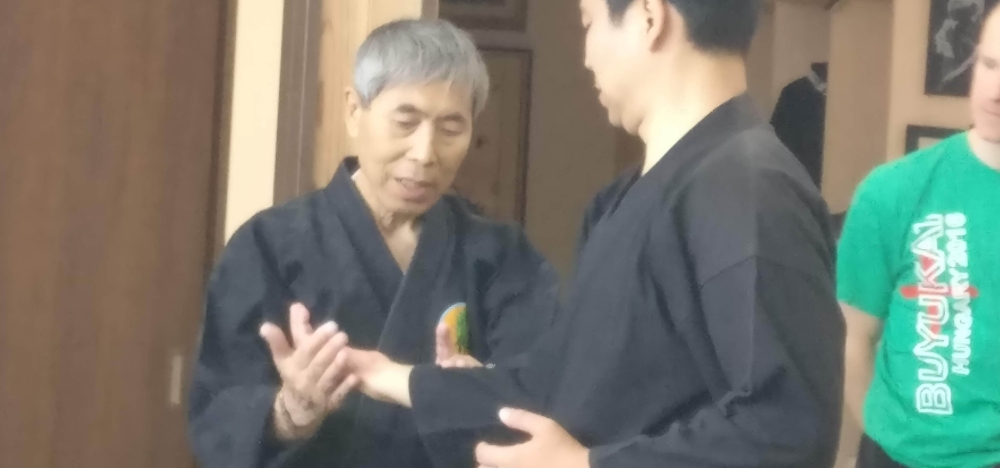
 When you train with Sōke, what is important is not what you see, but what you don’t. If you want to understand Sensei’s techniques, study the way he walks. This is the secret.
When you train with Sōke, what is important is not what you see, but what you don’t. If you want to understand Sensei’s techniques, study the way he walks. This is the secret.